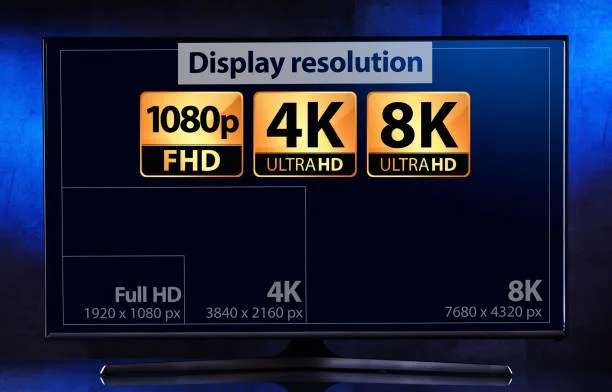When people shop for TVs, laptops, or projectors, they always hit one common roadblock: resolution. Terms like HD, Full HD, and 4K sound simple, but they can be confusing once you dig into the details. One of the most common comparisons people make is 720p vs 1080p screen resolution. These numbers aren’t just random. They describe how many pixels your screen has, and that detail alone makes a huge difference in what you see.
What Resolution Actually Means
Resolution is the number of pixels packed into your display. Think of pixels as tiny dots of light. The more dots, the sharper the image.
- 720p means 1280 pixels across the width and 720 pixels down the height.
- 1080p means 1920 pixels across and 1080 pixels down.
That’s almost 2.25 times more pixels in 1080p compared to 720p. More pixels equal more detail.
Elevate your knowledge and business edge—see what’s in our Related Post now!
The Real-World Difference
The jump from 720p to 1080p is not just a spec sheet improvement. It’s something your eyes can feel.
- On a small phone screen, the difference is subtle. Your eye may not pick up the extra detail.
- On a 32-inch TV, the difference becomes clear. Letters look sharper. Faces look smoother.
- On a 50-inch TV or bigger, 1080p dominates. A 720p picture often looks fuzzy or pixelated.
So the size of your screen matters just as much as the resolution or screen resolution.
Streaming Services and Resolution
Platforms like Netflix, YouTube, and Disney+ let you stream in different resolutions. Here’s how it plays out:
- Low-speed internet → Often forces you into 480p or 720p.
- Stable high-speed internet → Lets you stream in 1080p or higher.
If you only ever watch on a tablet or small laptop, 720p can be fine, but if you connect your laptop to a big TV, you’ll notice the gap immediately.
Gaming and Resolution
Gamers are very sensitive to screen quality or screen resolution. A difference in resolution can change the whole experience.
- 720p in gaming feels dated. Textures look flat. Landscapes feel blurry.
- 1080p delivers crisper details. You can spot enemies faster. The colors look more alive.
Frame rates also matter. Some gamers choose 720p on older systems just to boost frame rates, but modern consoles and PCs easily handle 1080p. For most people, that’s the sweet spot between performance and clarity.
Sports and Live TV
Fast-moving action highlights resolution limits. Watching sports in 720p often feels soft. The ball might blur. Jerseys may look less distinct.
Switch to 1080p and you notice every detail. You see sweat on a player’s forehead. You can read names on jerseys without squinting. Motion looks smoother.
Price and Accessibility
Why does 720p still exist if 1080p looks so much better?
- Older TVs still run at 720p.
- Budget projectors often max out at 720p.
- Cheaper streaming devices sometimes cap resolution.
It comes down to cost. 720p is cheaper to produce, transmit, and support. That’s why you’ll still see it in entry-level products.
The 1080p is now the standard. Almost every modern TV or monitor supports it. Prices have dropped so much that you rarely pay extra for it anymore.
Professional Use
Resolution matters in business settings, too. Presentations, training videos, and product demos all look sharper in 1080p.
- Charts and graphs are easier to read.
- Small text stays legible from the back of a room.
- Product visuals look professional instead of outdated.
If you’re showing something to clients or colleagues, 1080p creates a more polished impression.
Eye Strain and Comfort
Here’s something many people overlook: resolution affects eye comfort.
- A 720p screen can feel fuzzy if you sit close. Your eyes work harder to make sense of blurry details.
- A 1080p screen feels smoother. Text looks crisp, which reduces strain during long viewing sessions.
If you work long hours in front of a screen, 1080p can save your eyes from unnecessary fatigue.
When 720p Is Still Enough
Not everyone needs 1080p. Here’s when 720p still works:
- Small displays under 25 inches.
- Kids’ TVs where detail isn’t critical.
- Portable projectors for casual movie nights.
- Backup screens or devices where budget is the priority.
If you only stream simple content, 720p can be perfectly serviceable.
When You Should Always Go 1080p
For most people, 1080p is the minimum choice now. Here’s why:
- Large displays demand it.
- Work setups look sharper with it.
- Gaming systems run best on it.
- Streaming quality shines with it.
If you’re buying a new TV, laptop, or projector, avoid 720p unless price is the only factor.
Looking Ahead: Beyond 1080p
Technology doesn’t stop at 1080p. Today’s screens often push higher resolutions:
- 1440p (2K) is popular with gamers.
- 2160p (4K) is the new gold standard for TVs.
- 4320p (8K) is emerging, though still rare and expensive.
Here’s the truth: for most daily use, 1080p still feels great. It balances clarity, performance, and affordability.
Final Thoughts
The 720p vs 1080p debate isn’t just about numbers. It’s about what your eyes actually see. It’s about how sharp your movies look, how comfortable your work feels, and how immersive your games become.
- Choose 720p if you’re on a budget or using a small screen or screen resolution.
- Choose 1080p if you want sharper, clearer, more professional quality.
Resolution impacts more than image quality. It changes how you experience content. And once you get used to 1080p, it’s very hard to go back.
Take the next step in success—Explore More insights crafted for you today!






